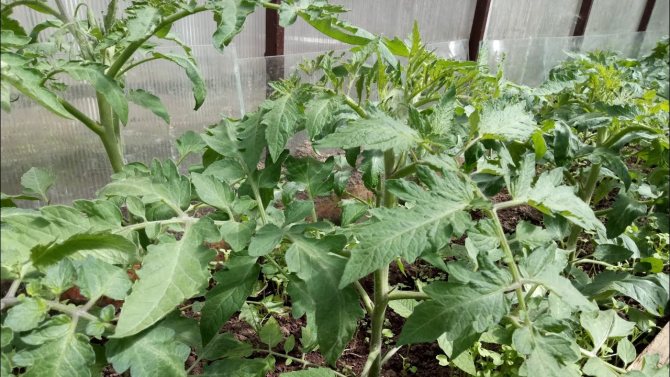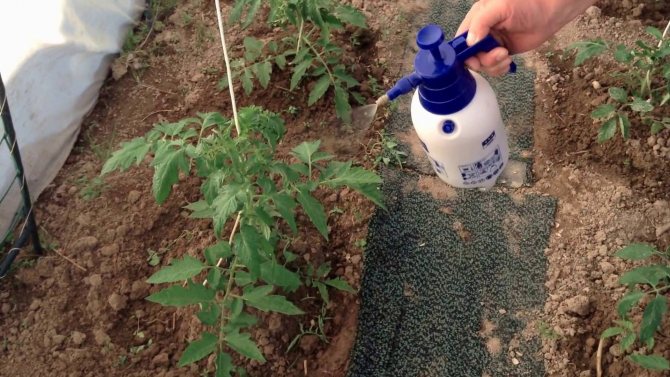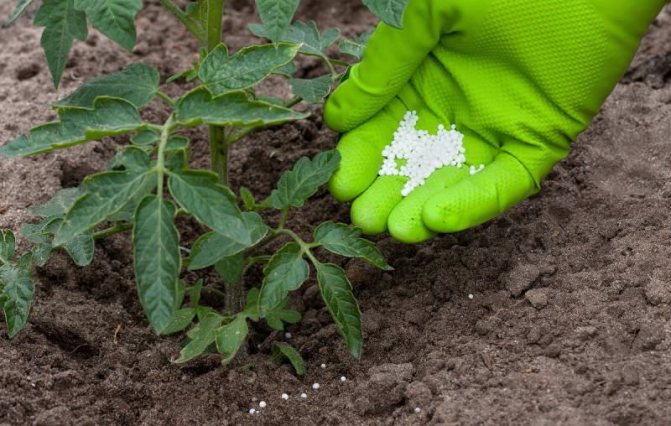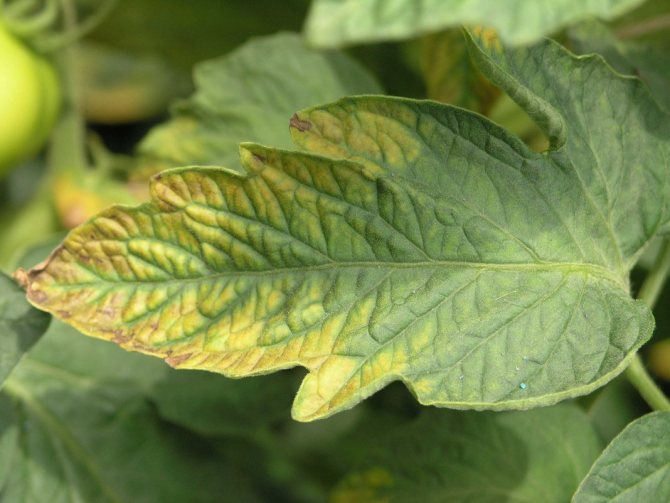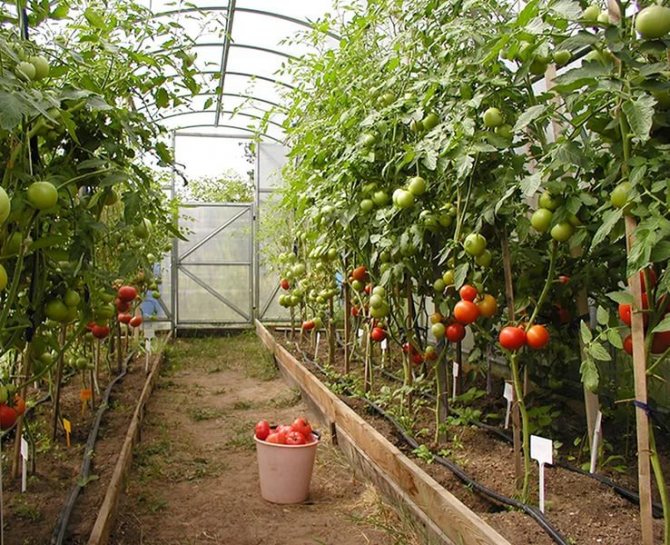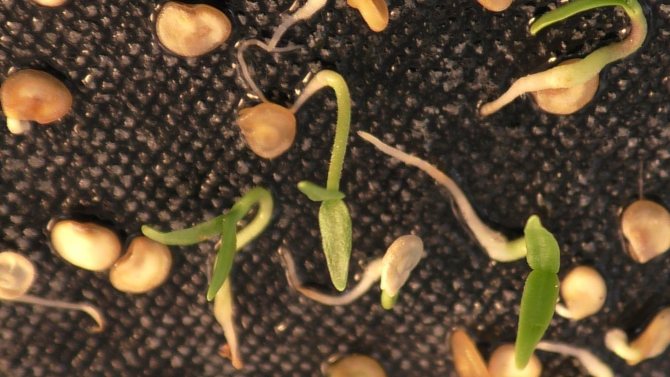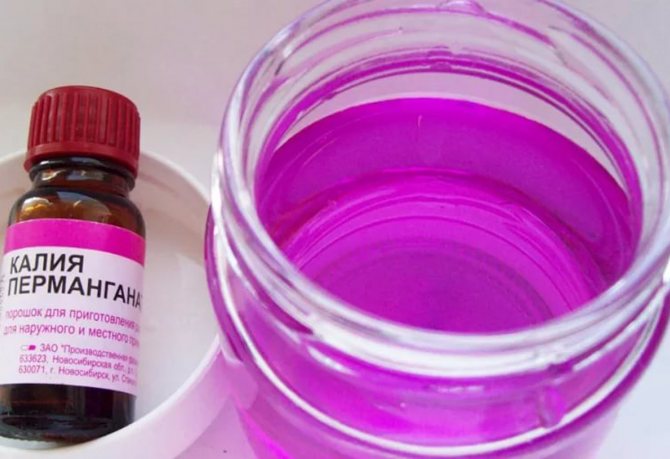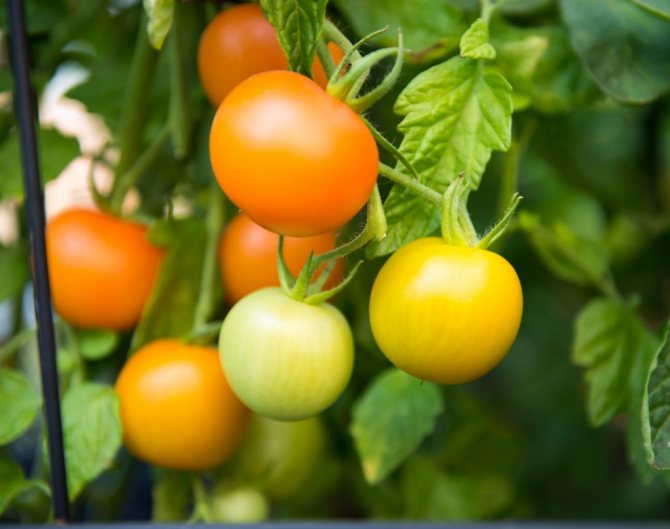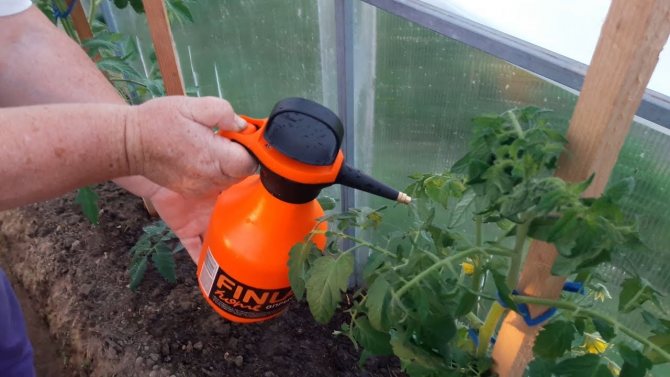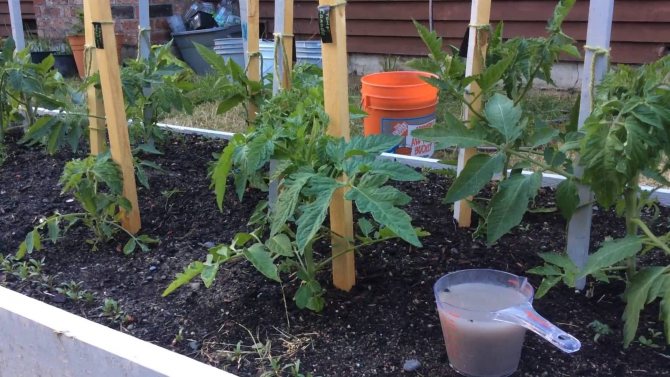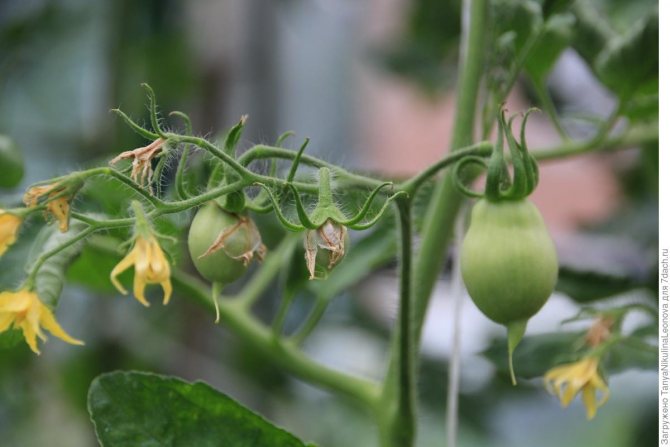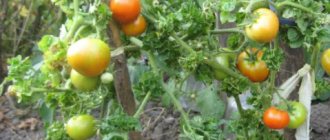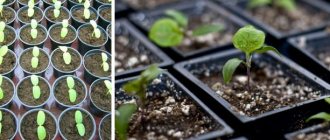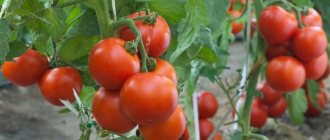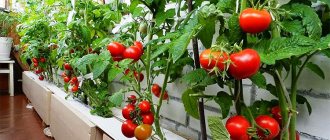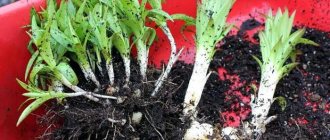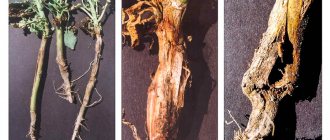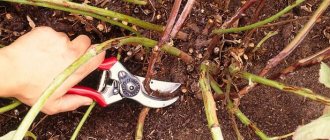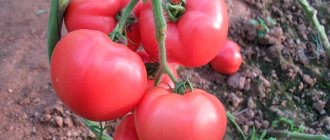Fertilizing tomatoes after planting in the greenhouse will provide the expected yield and a bright taste of the fruit. Properly formulated tomato nutrition affects the overall development of plants, the number of ovaries, the varietal shape of the fruit, even the consistency of the pulp. Tomatoes are fed with ready-made mineral complexes, organics, various folk remedies, proven by generations of gardeners.
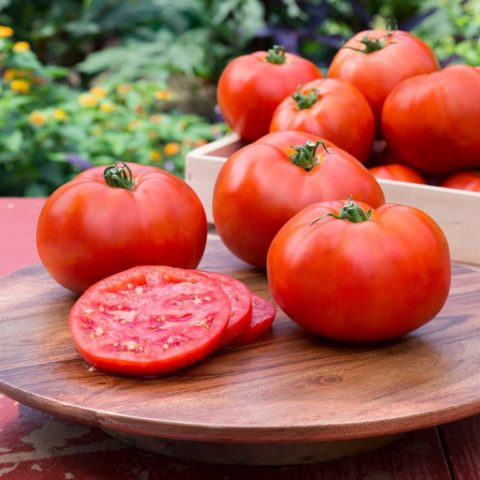
Proven folk ways
Consider popular folk recipes for feeding tomato seedlings after transplanting to a permanent place.
It is necessary to nourish flowering tomatoes with liquid solutions, in this way the plants absorb nutrients better.
Liquid top dressing can be distinguished in several stages:
- The first is needed to build up green mass - tops, on which fruits should form. For this top dressing, nitrogen fertilizers are needed, of course, in liquid form and in reasonable quantities;
- When a color appears on the bushes, a fertilizer of a different order is already required - containing potassium. And potassium is the most important substance that affects the formation of fruits;
- Do not forget about phosphorus, it is a necessary element during flowering and for the further life of a tomato bush. Phosphorus strengthens the roots of the plant, which is very important for the tomato bush.
You should not overuse fertilizers, it is better to apply a little, and observe the plants. For example, nitrogen fertilizers can be applied only when the seedlings are gaining green mass. But if the first flowers appear, nitrogen will be superfluous - it will only contribute to the growth of the bush, green mass.
An affordable and effective remedy during the flowering period of tomatoes is wood ash. Even if you come to the dacha for barbecue, do not be too lazy to throw a pinch of ash under a tomato bush. Moreover, if there is not much ash after the kebabs, first of all, you need to feed the weak bushes with thin stems and leaves.
Ash can and even should be introduced into the soil in liquid form. For this, approximately 100 g of ash is diluted in 10 liters of water. If you suspect that the acidity of the soil in the greenhouse is higher than the norm, you need more ash - by 50-70 g. But if the soil is alkaline, then 50 g of ash per 10 liters of water is quite enough.
The resulting drug is brought to a volume of 10 liters and the beds are sprayed. For the effectiveness of spraying, you can add laundry soap to the solution - 30-50 g per 10 liters.
Third watering with nutrient mixture
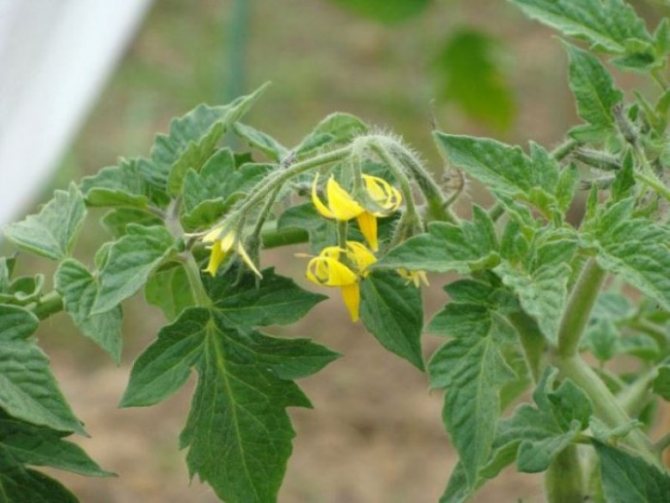

Flowering tomatoes
During the period of mass flowering, tomato bushes especially require additional nutrients. This is very important, because the number of ovaries formed on the bushes depends on what substances the seedlings receive during this period.
To prepare the necessary mixture, you will need the following components:
- 50 liters of clean water.
- 2.5 liters of liquid mullein.
- 2.5 liters of bird droppings.
- 100 g of potassium sulfate.
Watering one plant will require 1000 milliliters of solution. Sometimes it is impossible to get some elements for the preparation of this solution, then you can use nitrofosky, diluting one tablespoon of the drug in ten liters of water. The amount of liquid per bush is 1000 milliliters.
Top dressing of tomato seedlings
Healthy and robust seedlings are a prerequisite for a good harvest.In order for the plants to develop correctly, they need to be fed with yeast even before they are planted in the greenhouse.
Fertilizer from yeast is made as follows: 1 packet of dry yeast is mixed with 2 tbsp. sugar, pour 1 glass of warm water, mix thoroughly and leave for 2 hours. After this time, the infusion is diluted at the rate of 0.5 liters per 10 liters of water and the resulting liquid is poured over the seedlings.
In addition, during the spring digging, you should prepare the soil for the tomatoes in the greenhouse, if you did not have time to do this in the fall. 1 bucket of peat and sod land (per square meter) is applied to the beds. Then organic fertilizer is added: 0.5 l of wood ash, 10 l of compost or humus and 1 tsp. urea (per square meter).
Before planting seedlings, the soil should be shed with a solution of potassium permanganate. For this, 1 g of potassium permanganate is dissolved in 10 liters of hot water (not lower than 60 ° C).
Approximately 15-20 days after the seedlings have appeared in open beds, you can carry out the first top dressing of tomatoes. During this short time, young plants managed to take root and began to gain strength. At the moment, tomato bushes need nitrogen, potassium and phosphorus.
Among the proposed fertilizer options, the basis is 10 liters of water, to which the necessary components are added:
- 500 milliliters of mullein infusion and 20-25 grams of nitrofask.
- 2 liter cans of nettle or comfrey infusion.
- 25 grams of nitrofask.
- 500 milliliters of bird droppings, 25 grams of superphosphate, 10 grams of potassium sulfate.
- 1 tablespoon of nitrofask, 500 milliliters of mullein, 3 grams of boric acid and manganese sulfate.
- 1 liter of liquid mullein, 30 grams of superphosphate, 50 grams of wood ash, 2-3 grams of boric acid and potassium permanganate.
- 500 milliliters of liquid mullein, about 100 grams of ash, 100 grams of yeast, about 150 milliliters of whey, 2-3 liter can of nettles. The infusion is prepared within 7 days.
Each tomato bush will need about 500 milliliters of liquid fertilizer.
Tomatoes are among the most popular vegetable crops. They are on our tables almost all year round in different forms. Various preparations are made of them for the winter, so the vegetable should be juicy, tasty and healthy. Growing such a vegetable is not easy. It is very important to have good quality planting material and good soil. After that, you can plant seedlings in garden beds or greenhouses.
Seedlings of good tomatoes can be bought on the market or grown on their own. However, even the best seedlings will not be able to grow well and then give a bountiful harvest without proper and timely feeding. Tomatoes are a very demanding crop and respond well to fertilization. From this the amount of the harvest will envy.
After planting vegetables, the natural soil is depleted, therefore it needs systematic feeding. Tomatoes need a lot of minerals during ripening.
The type and amount of fertilization will depend on the growing period of the vegetables. Correct and timely feeding will provide nutrition to the crop when there is not enough of them in the soil. For tomatoes, the following types of fertilizers are considered the best:
- the compost in the upper part of the soil is used as a natural fertilizer, its nutrients will increase yields, protect against diseases and have a good effect on the growth of the tomato after planting;
- nitrogen is the most important substance, therefore it is included in almost all fertilizers, however, you should not add too much of it for a tomato, since it will give the growth of green mass, but not fruits;
- phosphorus is needed for good tomato growth, it will help fruits ripen faster, provide rich color and large size, protect against diseases;
- potassium is necessary after planting seedlings for the process of photosynthesis and active growth, if it is not enough, then the fruits will be small, the plant is weak and painful.
Tomatoes also need other nutrients such as iron, zinc, magnesium, copper and manganese. They are present in small quantities in fertilizers. They also participate in the growth of the plant after planting, but very few of them are needed.
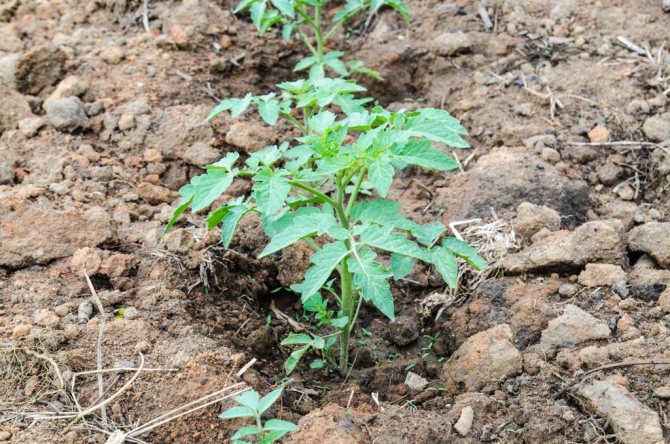

Other organic waste is also used. These fertilizers do not contain chemicals that can cause side effects.
Whatever the fertile soil, the procedure of frequent planting of various crops significantly depletes it. As a result, the volume of the harvest is significantly reduced. Fertility can be restored by systematically fertilizing the soil. Some vegetables, such as bell peppers, do not require a lot of fertilizer. And tomatoes, on the contrary, need significant feeding.
All summer residents know that tomatoes, during the ripening period, consume a lot of minerals from the soil in which they grow. Thanks to such minerals, a vegetative mass appears - the basis of the crop.
You need to feed the soil before planting tomato seedlings. For this, humus or various minerals are used. Top dressing is now extremely important, if it is not carried out, then vegetables need to be fertilized as the culture develops.
After such feeding, the following procedure is necessary after the color appears, when the vegetable requires potassium and phosphorus. The fertilization period is easy to determine by the appearance of the vegetable: its growth slows down, the leaves curl, and the color of the tomatoes changes.
For the entire life period, the culture needs to be fed about four times. For the first time, the procedure must be carried out two weeks after planting seedlings in open soil. During this period, fertilization promotes the growth of the crop and its root.
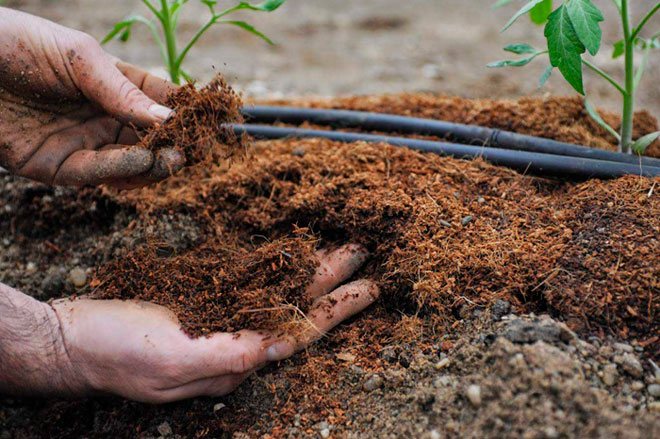

After this feeding, after 14 days, the next one is carried out, and the third, foliar - after the appearance of the color or ovary. The last time the plants are fed is during the harvest period.
Today, there are many dressings used at different stages of vegetable development. For tomatoes, minerals and organics are applicable, applied under the root and by the foliar method.
You can only feed tomatoes in the bush zone. The plant itself should not be fertilized, as this can provoke rotting of the individual and a decrease in the volume of the crop.
The question of how to feed tomatoes after planting in the ground is natural, since this plant with a powerful root system belongs to a culture that is demanding on soil fertility and quality of nutrition. High yields of tomatoes are obtained by providing the plant with organic and mineral fertilizers.
In order to grow tasty tomatoes, you need to properly feed the tomato seedlings after planting in the ground, since this is an important point on the way to getting a good and large harvest in the future. But not everyone knows the rules, types and the need for feeding itself, and after all, a lack of necessary minerals in a plant can result in a loss of yield.
DETAILS: How to care for a room chrysanthemum at home
Top dressing of tomatoes after planting in a greenhouse largely depends on the composition and nutritional value of the soil. Some gardeners make the mistake of placing manure under each tomato seedling when planting seedlings. Organics contain a large amount of nitrogen, which stimulates the growth of tomatoes at a time when the root system is not adapted.
In late May - early June, that is, 2-3 weeks after planting tomato seedlings in the ground, you can carry out the first feeding of tomatoes. The seedlings have already taken root, started to grow - it's time to help the plants gain strength and turn into a full-fledged bush. At this stage, nitrogen fertilizers (in small quantities) can be used in combination with potash and phosphorus fertilizers. We suggest using several options:
- For 10 liters of water, 0.5 liters of liquid mullein, 1 tablespoon of nitrophosphate.
- For 10 liters of water, 0.5 liters of chicken manure, 1 tablespoon of superphosphate, 1 teaspoon of potassium sulfate.
- For 10 liters of water, 2 liters of herbal infusion of nettle or comfrey.
- For 10 liters of water, 1 tablespoon of nitrophosphate.
- For 10 liters of water 50 grams of ash, 30 grams of superphosphate, 0.3 grams of boric acid, 0.3 grams of manganese sulfate, 1 liter of mullein.
- For a 200 liter barrel, 1 bucket of mullein, 2 shovels of ash, 2 kilograms of yeast, 3 liters of whey, 4-5 buckets of nettles. Insist for a week.
- For 10 liters of water 1 tbsp. spoon of nitrophoska, 0.5 liters of mullein, 0.5 teaspoon of manganese sulfate, 0.5 teaspoon of boric acid.
Pour 0.5 liters of finished dressing under each bush.
Seedlings will grow strong and healthy if fertilized with yeast prior to planting. To do this, mix dry yeast (1 sachet) with two tablespoons of sugar, then pour the mixture with a glass of warm water. The solution is infused for two hours. At the end of this time period, the tincture should be diluted in a proportion of 0.5 l to 10 l of water. The resulting emulsion is used for irrigation.
The soil for growing tomatoes in the greenhouse is prepared in autumn or spring. During the spring digging, the beds are fertilized with peat (1 bucket) and sod soil. Then you need to feed the earth with organic matter. A mixture of wood ash (0.5 l), compost (10 l) and urea (1 teaspoon) is well accepted by plants.
Before planting tomato bushes, disinfect the soil with a solution of potassium permanganate. A suitable mixture will be obtained from 1 g of potassium permanganate, diluted in 10 liters of water (temperature not less than 60 degrees).
If in the previous season crops were grown in the greenhouse that were often fertilized with organic substances, it is categorically not recommended to introduce humus. An excessive mass of useful elements will be detrimental to greenhouse tomatoes. The plant will form leaves, but fruit set and formation will be significantly impaired.
The primary phase of development in the Solanaceae family is very significant, since during this period the root system is strengthened. Proper feeding stimulates the growth of the bush and helps it adapt to the new environment. Seedlings get used to the soil in the first 10-14 days, after this period you can start the first fertilization. Nitrogen-containing compounds will be a powerful impetus for growth.
Fertilizing before planting
Before planting seedlings in the greenhouse, fertilize the soil by adding 1 m²:
- a bucket of humus or compost, this organic matter will serve as a source of nitrogen, and also loosen the earth;
- 2 cups of wood ash as a source of phosphorus, potassium and trace elements.
If the above-mentioned natural fertilizers are not available, then for 1 m²:
- instead of organic, add 1 tbsp. l. urea or ammonium nitrate;
- instead of ash - a tablespoon of superphosphate and potassium sulfate.
There is also a third option: 1 tbsp. l. nitroammofoski for 1 m². When applying mineral fertilizers on heavy soils, use as a baking powder: chopped dry grass, last year's leaves, old sawdust.
Feeding with yeast
Such feeding is carried out only 2 times per season, otherwise there will be solid greenery, to the detriment of fruit formation. Tomatoes are fed with yeast in June, when it is necessary for the plant to gain strength and grow thick stems and good roots.
To prepare a working solution, you need to take 1 kg of baker's yeast in a briquette, dilute in 5 liters of warm water and let it brew for a day. To feed the tomatoes, 0.5 liters of this solution is added to a bucket of water and watered under the bushes. Half a liter of solution is consumed per plant. This feeding is just yeast.
Another recipe for yeast feeding: put 100 g of live yeast and half a glass of sugar in a 3-liter jar. Pour warm water almost to the top and place in a warm place for fermentation. Before the end of fermentation, the jar sometimes needs to be shaken. Use the resulting "mash" for feeding tomatoes at the rate of 1 glass per 10 liters of water. They are fed with this fertilizer once at the rate of 1 liter under a bush.
Without exception, all vegetable crops love yeast fertilizer. The answer to this is simple - yeast contains a lot of proteins and active substances (including those useful for weeds, do not forget about this).
When tomatoes are cultivated indoors, the yeast feed is done three times:
- After a two-week stay of the seedlings in a permanent place;
- The second feed, the most important, should be at the beginning of flowering;
- For the third time, the already emerging fruits are fed.
How is mineral deficiency manifested?
The main substances that greenhouse tomatoes require are nitrogen, potassium and phosphorus. If there is a significant shortage of one of these substances in the soil, you should not expect a good harvest. At the seedling stage, it will already be noticeable that the plants are missing something. So, the lack of nitrogen is expressed in the weakness of the stems, which become too thin and poorly pigmented. It is unlikely that such a weak base will be able to withstand massive bunches of tomatoes.
Lack of phosphorus can be noticed by the appearance of characteristic purple spots on the lower leaves of tomato seedlings. If the lack of phosphorus is not replenished in time, the fruits will ripen with a delay, and bad in general. It will also be interesting to learn about how tomato seedlings are grown, and what you should pay attention to, and for this you should follow the link.
The video shows the treatment of plants:
Lack of potassium manifests itself in the form of a general weakness of the bush, including its stems and leaves. The latter noticeably fade, and even die off. Due to the resulting lack of green mass, the processes of photosynthesis in the plant are poor, therefore the development of tomatoes slows down, or even stops altogether. It will also be helpful to know if you can plant tomatoes after pepper.
The first feeding of tomatoes after planting the soil
In late May - early June, a few days after planting the seedlings, the tomatoes must be fed with a complex fertilizer (containing nitrogen, phosphorus and potassium).
An excess of nitrogen leads to a rapid growth of the vegetative mass to the detriment of the formation of ovaries, therefore, at the initial stage of tomato growth, it is important not to overdo it with nitrogen fertilizers.
The humidity level in the greenhouse is higher than in the open field, so the processes of absorption of useful elements are faster. And so that the plant has time to assimilate them, you need to slightly reduce the concentration of fertilizers.
So, experienced gardeners are advised to add the following top dressing to the soil: 1 tbsp. nitrophoska and 0.5 l of mullein are diluted in 10 l of water and poured under each plant, 1 l of the resulting mixture.
Nitrogen fertilizers strongly stimulate the growth of green mass, to the detriment of fruit formation. Therefore, zealous with them in the first feeding is not a good decision. It is better to give preference to phosphorus-potassium fertilizers. The best option for tomatoes is ash or potassium sulfate. It is better not to take potassium chloride - chlorine has a depressing effect on tomatoes.
Of the micronutrients, the most necessary for tomatoes are boron and magnesium. Boron is necessary during flowering so that flowers and ovaries do not fall off. To do this, it is enough to spray the leaves and flowers 1-2 times with a solution of boric acid in a concentration of 1 g per 1 liter of water and the problem will be solved (unless, of course, the temperature of 40 degrees is not in the greenhouse every day). Boron also helps to increase sugar in fruits.
Well, organic fertilizers. The infusion of mullein, bird droppings, weeds (better than nettles) are only beneficial, but also in moderation and only before fruit setting, after which organic matter does not need to be introduced in any form, active growth of the vegetative mass at this time is no longer needed.
It is best to use folk remedies for feeding tomatoes at all stages of growth, and not chemistry. Feed your plants with herbal infusions, ash, mulch with compost and humus.Maybe a little less fruits will grow, but they will be much tastier and sweeter than the "chemical" ones. Although the results of the work of natural gardeners are sometimes very impressive, their yields are amazing!
Let's share in the comments the recipes for our dressings, after which good yields are obtained. If you have photos, then attach them to the comments. Good harvests to you!
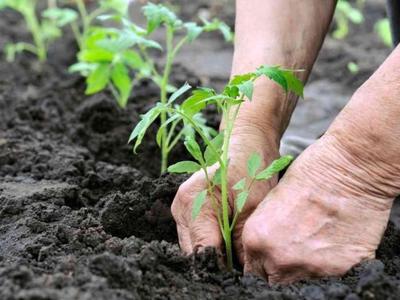

For growing tomatoes in polycarbonate greenhouses, it is first of all important to create optimal temperature, humidity and lighting. However, plant nutrition also significantly affects the result. At each stage of growth, the bushes require additional feeding in the form of micro and macro elements. If the plant does not receive this, it develops poorly, the fruits are tied poorly and ripen for a long time.
At the same time, the introduction of an excessive amount of top dressing has a negative impact on this crop, so it is important to adhere to the rationing rules. From oversaturation with organic substances, the bushes develop a deciduous part and practically do not bear fruit. Excessive amounts of mineral fertilizers dehydrate the bush and lead to its death.
Tomato seedlings are considered quite whimsical. Its appearance allows you to determine the lack of a certain type of elements:
- the acquisition of a purple hue in the lower part of the bush and in the area of leaf petioles indicates a lack of phosphorus;
- tarnished leaves and light green color indicate a lack of nitrogen;
- lack of calcium manifests itself in the form of curled leaves and rot on the fruit.
DETAILS: Black Seed Oil: Benefits for Women
Novice gardeners should familiarize themselves with the technologies for introducing fertilizers into the soil, which are divided into several groups:
- with the use of minerals;
- using organic fertilizers;
- combined use.
Foliar dressing takes an important place in the care of plants. In this case, a solution with a weak concentration of biofertilizer is sprayed onto leaves and stems. The period of fruit set and ripening is stimulated by foliar feeding in the form of a superphosphate solution (1 teaspoon of the substance per 10 liters of water).
Boric acid dissolved in water (in the same proportion) helps in hot weather if flowers begin to crumble from the bushes. It is recommended to carry out such feeding in the evening or in cloudy weather once a month.
- mullein (1 l);
- ash (0.5 cups);
- superphosphate (1.5 tablespoons);
- water (10 l).
The solution is consumed in the amount of 0.5 liters per one bush of seedlings. Before applying this liquid, it is imperative to water the soil with plenty of water, otherwise direct contact with the fertilizer will lead to burning of the roots.
Drinks according to folk recipes also give good results. Agronomists fertilize tomatoes with Green Tea tincture, which is prepared from the following elements:
- water (50 l);
- chopped grass (weed, nettle, lawn greens) - 5 kg;
- mullein (1 bucket);
- ash (1 glass).
The ingredients are cooked in a large container, such as a barrel, which is covered with plastic wrap. Then it is left in a sunny place to ferment. The solution is prepared for two weeks, while it must be stirred daily to eliminate air bubbles. After this time, the infusion is diluted with water, bringing the total volume to 100 liters. It is necessary to use "Green Tea" (2 liters under one bush) after abundant watering with running water.
Chicken droppings are good for berry development. The solution is prepared from a third of a bucket of dry droppings and water. You need to insist on it for about a week, stirring regularly. The fermented slurry is diluted with water (1 liter of fertilizer per bucket of water). Top dressing should be applied in small portions: one liter of tincture is poured under each seedling bush, avoiding contact with the leaves. The second feeding is carried out after ten days after the first with the same solutions.
What fertilizers do tomatoes need
All fertilizers for growing tomatoes in a greenhouse are divided into:
- organic: humus, compost;
- mineral: superphosphate, potassium sulfate, urea, ammonium nitrate, nitroammofoska, calcium nitrate;
- organomineral - these are modern mixtures containing humus and mineral additives (sold under the brands: OMU, Forte, Florizel, Joy, etc.).
In addition, there are various stimulants of root formation, fruit formation, growth, anti-stress (Energen, Epin, Ovary, Bud, HB-101, Zircon, Kornevin).
Video: mineral and organic fertilizers, which is better
You will need funds from each group to grow tall tomatoes in a greenhouse. Of course, you can apply fertilizer to the ground once before planting and no longer feed it, you will get 1-2 kg per bush. But for abundant fruiting, effective use of the greenhouse, so that each square meter brings maximum benefit, you will have to make more efforts, in particular, to feed.
Chicken droppings
This fertilizer is one of the fastest-acting, effective not only for tomatoes during flowering, but also for all garden crops. It contains phosphorus, potassium, nitrogen, calcium and much more that vegetables love.
Chicken manure contains 3-4 times more nutrients than other natural substances of animal origin. Even mullein does not have the health benefits of chicken droppings.
It is necessary to immediately warn novice vegetable growers that it is necessary to use such fertilizer with great care. In no case should you use fresh manure, it has a high content of uric acid, which is quite capable of "burning" the root system of tomatoes (and other crops).
Those who grow tomatoes in unprotected soil need to be fed.
The first is in unprotected soil. In this case, nitrogen is added. The timing of fertilization is determined by how the plants are developed. This is usually done a few days later, 3-4 days after disembarkation. At this time, you just need to dilute a tablespoon of chicken droppings in 10 liters of water.
Mineral mixtures - names, successful combinations
The most affordable and economical fertilizers for tomatoes in a greenhouse are mineral mixtures. There are one-component, two-component and complex.
In greenhouses, they are trying to grow hybrid varieties of tomatoes that require more phosphorus-potassium nutrition. In this case, one organic matter may not be enough and the pulp of the tomatoes will change its consistency. If the plant lacks potassium during the fruiting period, then the pulp will look something like this.
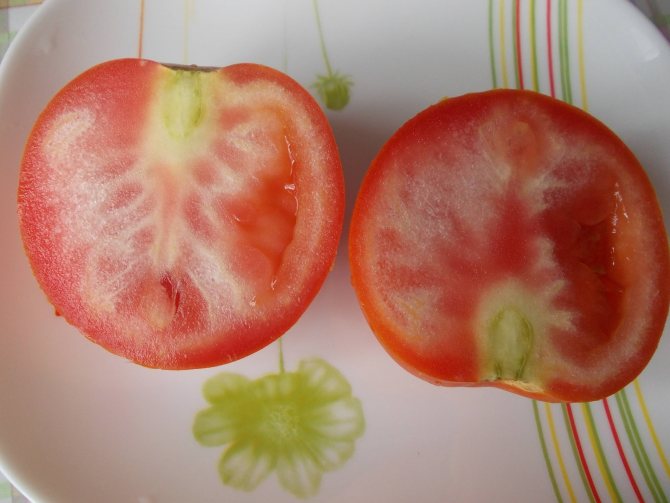

Tough white streaks will appear and will not be easy to chew. It is not so much about potassium as about phosphorus, without which the root system gradually dries out and cannot absorb potassium, which affects the pouring of fruits. Therefore, special attention should be paid to the amount of potassium and phosphorus.
Top dressing of tomatoes in July in the greenhouse is carried out:
- superphosphates - phosphorus content 26%;
- kalimagnesia - potassium content 26%, magnesium - 18%;
- complex phosphorus-potash fertilizers - "Autumn", "AVA".
Dosages are indicated in the instructions. It is recommended to strictly adhere to them.
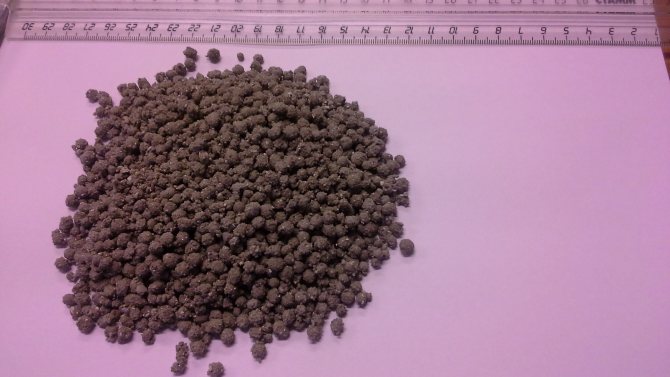

The summer-autumn period is just the case when it makes sense to add organic matter to mineral fertilizers, or vice versa. Wood ash and bone meal are the record holders for the content of phosphorus and potassium. To prevent the lack of potassium and phosphorus, it is necessary to add one of the substances to the soil during flowering.
They do not spoil the soil, and the benefits to the plants will be tangible. In addition, they contain the necessary calcium to improve the taste of tomatoes and form the consistency of the pulp. This element was undeservedly transferred to the category of trace elements. It requires much more than other micronutrient fertilizers.
How to feed tomatoes during fruiting
During the formation of flowers, it is recommended to feed the tomatoes with such a universal fertilizer as Sudarushka tomato.It contains the necessary macronutrients (nitrogen - 13%, phosphorus - 8%, potassium - 8%), trace elements (zinc - 0.15%, manganese - 2%, cobalt - 0.04%, copper - 0.1%, molybdenum - 0.04%, boron - 1.5%), and there is no chlorine.
1 tsp fertilizers are dissolved in 10 liters of water and 0.5 liters of the resulting liquid are poured under each plant. This fertilizer not only increases yields, but also prevents the development of fungal diseases.
If you prefer to make your own fertilizers, use 1 tbsp. potassium sulfate and 0.5 liters of poultry manure, dilute in 10 liters of water, then add 0.5 liters of liquid mullein and pour the resulting mass over the tomatoes at the rate of 1 liter of fertilizer for each plant.
Also, during the formation of ovaries, it is necessary to carry out foliar feeding. To do this, in the evening or in cloudy weather, spray the infusion of wood ash on dry leaves. To prepare such a fertilizer, 2 cups of ash are poured into 2 liters of hot water. Then they insist for 2 days, then the precipitate is filtered off. The resulting liquid is brought to a volume of 10 liters with water and the tops of tomatoes are treated with it.
Many modern greenhouse tomato varieties respond well to foliar fertilization with magnesium sulfate: 15 g of fertilizer is dissolved in 10 liters of water and the resulting liquid is sprayed on the tops of tomatoes, spending 1.5 liters per square meter. And for the active setting of fruits, tomatoes are fed with superphosphate (1 tsp per 10 liters of water).
As a rule, foliar feeding of tomatoes is carried out once a month.
During the period of mass fruiting, tomatoes are fed for the last time in a season. In this case, 2 tbsp. superphosphate is dissolved in 10 l of water and 1 tbsp is added there. liquid potassium humate. 1 liter of fertilizer is applied under the root of each bush.
Plants need elements such as boron, manganese, iodine and potassium to form a large number of tasty and fleshy fruits. Their deficiency can be replenished by feeding with a complete mineral fertilizer with trace elements or by preparing a nutritious feeding at the rate of 10 g of boric acid powder (it is previously dissolved in a small amount of hot water), 10 ml of iodine and 1.5 liters of sifted ash per 10 liters of water. Fertilizer consumption is the same - 1 liter per bush.
After the appearance of fruits, only root dressings are used.
The nutrient requirements of tomatoes are constantly changing. During the flowering period, it is better to fertilize them with mixtures containing phosphorus, and reduce the amount of nitrogen substances to a minimum level. With such a top dressing, tomatoes will give a plentiful fruit ovary.
Fertilization with yeast is carried out during the ripening of the buds and their first blooming. The solution contains the following components:
- dry yeast (10 g);
- water (10 l);
- sugar (2-3 tablespoons).
The ingredients are mixed and infused in the sun for up to 3 hours, then water is added in a ratio of 1:10. The plant is watered at the root. At the same time, wood ash is introduced between the rows.
Iodine and milk are used by gardeners during the formation of the ovary. In 4 liters of water and one liter of milk, 15 drops of iodine are diluted. The mixture is used for spraying bushes in the morning and in the evening, while the liquid should not drain from the leaves. This will help stimulate the growth of the ovary and prevent late blight.
Superphosphate is a proven agrochemical for tomato nutrition. We offer a step-by-step recipe for making a solution:
- superphosphate (2 tablespoons) is mixed with hot water (1 l);
- infuse the mixture for 12 hours until the fertilizer crystals dissolve;
- increase the volume of the tincture to 10 liters by adding water;
- spray the plants (in the evening).
Boric acid also has a positive effect on fruit formation. But it is used only once in a ratio of 5 g per 10 liters of water. Greenhouse tomato varieties accept complex mineral preparations well. For example, potassium monophosphate, Solution, Master argo.
As soon as buds and flowers appear on tomatoes, the "potassium-phosphorus" era begins. Nothing now is so necessary for our tomatoes as phosphorus and, especially, potassium. The options are:
- For 10 liters of water, a half-liter can of ash.
- For 10 liters of water, 1 tablespoon of superphosphate, 1 teaspoon of potassium sulfate.
- For 10 liters of water, 2 tablespoons of wood ash and 1 tablespoon of superphosphate.
- For 10 liters of water, 1 tablespoon of nitrophosphate, 1 teaspoon of dry powder of potassium humate.
- For 10 liters of water, 10 grams of potassium nitrate, 25 grams of magnesium sulfate.
- For 10 liters of water, 10-15 grams of potassium monophosphate (KH2PO4).
- For 10 liters of water, 10 grams of potassium magnesium (potassium-magnesium sulfate K2SO4 MgSO4).
DETAILS: Method for pickling green tomatoes - 8 step by step photos in the recipe
Pour 0.5-1 liter of nutrient mixture under each bush.
To attract pollinating insects to flowering tomatoes and better set fruit, you can spray the plants with a mixture of boric acid and sugar. One liter of boiling water will require 100 grams of sugar and 2 grams of boric acid. All you need to mix well and cool the solution to room temperature.
If it is hot and because of it the flowers crumble, it is recommended to spray with a solution of boric acid at the rate of 5 grams per 10 liters of water.
And one more thing: from mid-July, all feeding of tomatoes must be stopped, as well as abundant watering. During this period, any additional nutrition and moisture contribute to the growth of green mass, and the ripening of fruits, on the contrary, is delayed.
This group includes recipes containing phosphorus and potassium. At the heart of every recipe is a large 10 liter bucket of water:
- Wood ash in the volume of a half-liter can.
- 25 grams of superphosphate, ash - 2 tablespoons.
- 25 grams of superphosphate, 10 grams of potassium sulfate.
- 1 tablespoon of magnesium sulfate, 1 teaspoon of potassium nitrate.
- 1 teaspoon potassium monophosphate.
- potassium humate - 1 teaspoon of powder, nitrofask - 20 grams.
- 1 cup yeast mixture (100 grams of yeast and sugar, 2.5 water) water 0.5 liters of wood ash. The yeast mixture should "ferment" for 7 days in a warm place.
Each tomato plant requires from 500 milliliters to 1 liter of ready-to-use fertilizing. The nutrient mixture is poured over the root of the plant.
Along with the application of fertilizers by the irrigation method, you can also use special useful spraying.
For example, a sweet sprinkling based on sugar and boric acid is necessary for tomato bushes during the period of active flowering. This mixture will attract a large number of insects, which will pollinate the flowering plants and promote better ovary formation. A solution is prepared from 4 grams of boric acid, 200 grams of sugar and 2 liters of hot water. It is necessary to spray vegetables with a cooled solution with a temperature of about 20 degrees.
In hot and dry weather, flowers on tomato bushes may crumble. You can save them from mass fall by spraying. Add 5 grams of boric acid to a large bucket of water.
The active ripening of tomato fruits begins around the second half of July. It is from this moment that watering and feeding stop, so that the green mass does not build up on the plants, and all the forces went to the ripening of the tomatoes.
How to feed tomatoes in a greenhouse: basic methods and rules
It should be understood that tomatoes need to be fed as needed. In other words, if you properly filled the soil with nutrients during the preparation of the beds (or put it in the hole), then most likely you will not need any additional fertilizing.
But! If the plant begins to signal that something is missing, then you have no choice: you need to fertilize, and as soon as possible.
Next, we will consider the main signs of a lack of nutrition, as well as the main methods (types) and rules for feeding tomatoes.
When tomatoes urgently need feeding - signs of a lack of macro- and micronutrients
Sometimes in the process of development, tomatoes themselves indicate a lack of a certain element in the diet. This is expressed by characteristic external signs (as a rule, it is on the leaves).
- Lack of nitrogen... Plants begin to lag behind in growth, stretch out, the foliage becomes smaller and acquires a pale green color with a yellow tint, the stem becomes thin and soft.
- Lack of phosphorus... The plant as a whole darkens, or rather, its leaves acquire a bluish tint with purple veins, and can also wrap inward.
By the way! More details about the reasons why the leaves of tomatoes can curl, you can find in this article.
- Lack of potassium... Expressed curling the tips of the leaves and a characteristic brown border along their edges (they also say that what happens marginal burn).
- If not enough zinc, then the leaves become very fragile and rough (rough) and can also curl downward, and orange-brown chlorosis forms on old leaves.
- If not enough borathen leaves brighten and again curl up.
- With a shortage copper and sulfur, young leaves usually wilt, and then can acquire a bluish-green color and curl upward (into a tube).
- Disadvantage calcium manifested in the fact that the leaves streaks turn white, and they themselves curl up.
Note! More details about the reasons why the leaves of tomatoes can curl, you can find in this material.
- With a shortage gland - leaves turn yellow and sag, while also sometimes twisting.
- Disadvantage magnesium.
In this case, you need to spend top dressing with a certain macro- or micronutrient fertilizer or complex micronutrient fertilization
, for example, Gumat +7 or similar.
Video: lack of nutrients in tomatoes and the causes of leaf curling
Feeding methods
There are 2 ways or types of feeding any plant (including tomatoes):
- root (watering at the root);
- foliar or leaf (by leaves).
Root dressing imply the application of fertilizers directly under the root of the plant, as a rule, in liquid form (i.e. a solution is prepared first = granular or liquid fertilizers are dissolved in water). Most often in this way they make macronutrients.
Although you can also apply fertilizers first dry (special wood ash), and then watering.
Concerning foliar (leaf dressings), then they are used as additional, since they are most effective when the plant especially needs certain trace elements (which manifests itself in its appearance), in other words, they are carried out out of necessity.
Although sometimes the leaves are fed with complex fertilizers such as calcium nitrate (nitrogen + calcium).
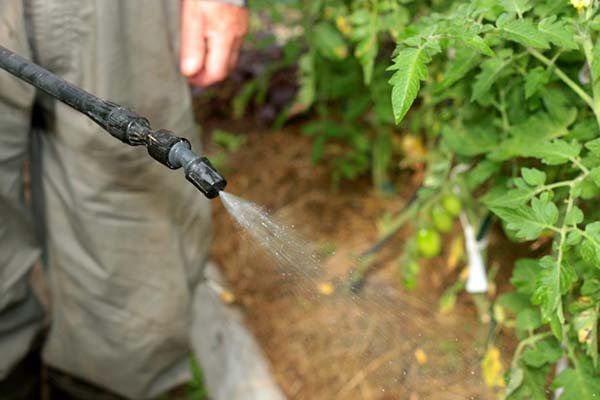

Interesting! Foliar top dressing increases the digestibility of fertilizers during critical periods of growth and development, thereby compensating for the deficiency of macro- and microelements and improving the efficiency of fertilization (increases the availability of other nutrients, especially against the background of nitrogen application).
Feeding rules
- For feeding, you should choose morning or evening hoursor daytimeif worth overcast.
- Top dressing is very convenient combine with watering.
Directly before mineral fertilization in any case you need watersince it is always recommended to feed on wet soil.
- Exemplary liquid fertilizer consumption for 1 plant - about 0.5 liters.
- Top dressing is best done regularly, every 7-14 days, in order to constantly feed the plant (you can do this more often, while necessarily reducing the concentration of fertilizer).
By the way! Tomatoes begin to consume food from the soil especially intensively when the third brush is tied up and the fourth begins to bloom. It is during this period that it is necessary to start actively feeding the tomatoes with potassium fertilizers (with the addition of calcium, magnesium, boron), and doing this every 5-7 days.
Foliar dressing
For intensive growth of fruits and improvement of taste, spraying of bushes is useful during flowering. Such feeding will bring the elements to the plants, which are few in the soil. If the roots assimilate all the substances in the ground, then, unlike them, the leaves take only the necessary elements from the solution.
The effect of processing tomatoes with scarce drugs can be seen within one day. Whereas spraying with the same substances that nourish the root will bring results in 10-15 days.
After the first flowers appear on the bushes, such a "dish" is prepared for spraying:
- Nitrofoska - 2 tablespoons;
- Sodium humate - 2 teaspoons;
- Water - 10-12 liters.
The consumption of the product is 4-5 liters per square meter of the garden.
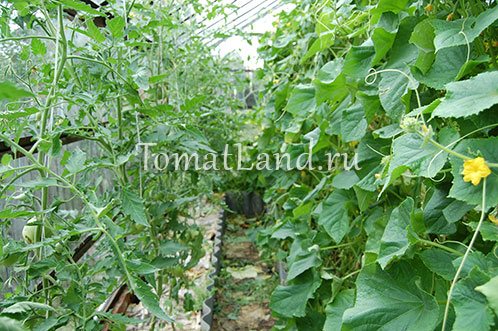

In addition to root feeding of tomatoes after planting in the ground, it is useful to carry out foliar spraying with nutrients. If root dressing for the entire growing season needs to be applied 3-4 times, then foliar spraying with nutrient components can be carried out with an interval of 10 days.
- Before the beginning of the flowering period, you can treat the leaves with a urea-based solution.
- During flowering and ovary formation, it is useful to treat with a superphosphate solution.
- A composition of boric acid, copper sulfate and urea is useful. All components are taken in equal amounts and filled with water.
- You can spray the plant with a solution based on boric acid alone.
- Many gardeners use a milk and iodine based recipe for processing. Milk and a few drops of iodine are added to a bucket of water. This composition is able to saturate the plant with microelements and protect against the penetration of pathogenic bacteria.
- You can prepare a solution of wood ash, which will replace any other complex fertilizers. The ash is poured with water and boiled for 30 minutes. After the solution has cooled, it is diluted with water, crushed soap is added and the green part of the plant is sprayed.
- For processing greens, you can mix Fitosporin and Zdraven.
Phytosporin is a biological product that enhances plant immunity, promotes its recovery in case of damage, accelerates growth and improves development. Fitosporin can be used as a preventive measure every 10 days. 5 g of powder is dissolved in a bucket of water.
Fertilizer Zdraven helps to strengthen the root system of vegetable crops, reduces the formation of barren flowers, improves the palatability of fruits, and increases disease resistance. On the 14th day after transplanting seedlings, you can prepare a solution. You need to take 15 g of the substance in a bucket of water.
Foliar treatment should be carried out before 10 am in dry, calm weather. It is recommended to combine foliar fertilization with treatment against pests and diseases.
Phase of active flowering and tomato ovary
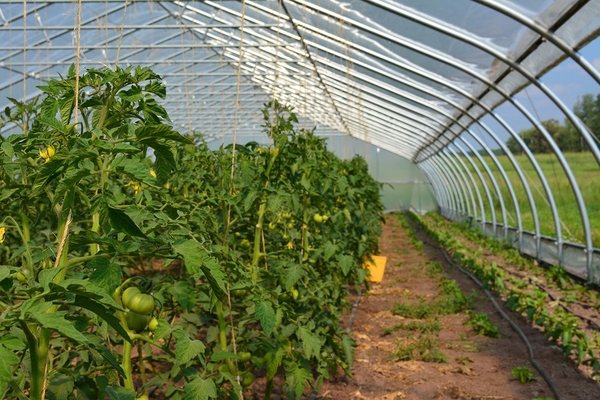

To get a gorgeous harvest, you need to feed the tomatoes with boron (especially when the temperature rises), preferably by foliar method.
- Preparations: 5-20 g of boric acid / 10 l of water, or a solution from a pharmacy called "Boric acid"; - Boroplus; - 15-20 g borofoski / 10 l of water (contains 10% P, 20% Ca, 16% K, 2% Mg, in general, a complete set of essential trace elements for tomatoes).
Gardeners at this time carry out the first potassium feeding (popular solution: 100-200 g of wood ash / 10 l of water). Mineral fertilizer (complex N, K) - 20-30 g of potassium nitrate / 10 l of water (contains 13.6% N, 46% K). Then you need to fertilize with pure potassium, but if the fruits are not fed with N, then you can use potassium nitrate.
How to identify tomato diseases
Plants clearly signal their well-being by their appearance:
- When purple spots appear on different parts of the plant, this indicates a phosphorus deficiency. Spraying the bushes with a weak superphosphate solution will help get rid of the trouble;
- Leaves rolled inward indicate a lack of calcium. In this case, it helps by spraying with a solution of calcium nitrate;
- If the tomatoes lack nitrogen, the color of the entire bush becomes yellowish-green, the plants stagnate. Here a weak solution of mullein, or the so-called "herbal tea" - a tincture of finely chopped weeds - nettle, plantain, celandine and weak mullein - will help the gardener.
To choose the most convenient feeding method, you need to experiment. In each region, each individual greenhouse, choose your option, what is more effective - either buy store-bought fertilizers, or cook natural mullein, bird droppings, etc. on your own.
Do not forget about the correct alternation of crops in greenhouses and garden beds. Any crop planted for a long time in one place can harm the soil and deplete it.
A source
Diseases of greenhouse plants
Every fruiting season, gardeners face a problem and a question: tomatoes grow poorly in a greenhouse - how to feed them. If everything has been done correctly before, according to the schedule, but the plants do not look good (some of them), then the disease begins. Most likely fungal. It is necessary to inspect the bushes and urgently remove the damaged ones, until they have infected all the rest.
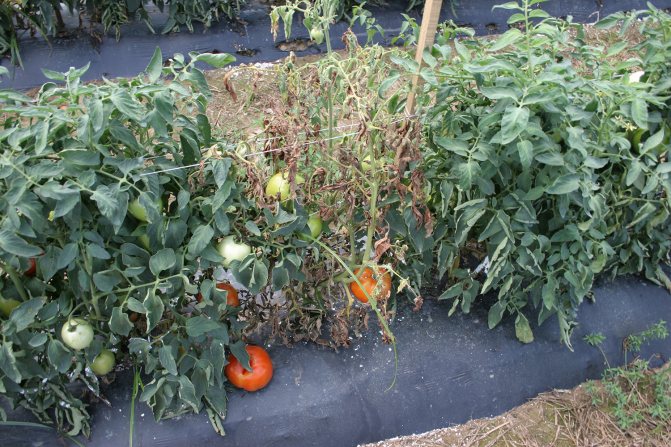

Healthy plants should be sprayed with a solution of trace elements from the outside and inside of the leaf plate.
Fertilizing tomatoes in a greenhouse with microelements will increase the immunity of plants, and they will cope with the disease. In case of defeat of 2 - 3 bushes, you need to urgently take action and affect the fungus with chemicals.
Important! Buying Disease Resistant Hybrid Seeds Will Avoid Epidemic
In order to prevent the spread of diseases in the greenhouse, you need:
- monitor the acidity of the soil;
- bring in organic matter;
- use biological products containing beneficial bacteria;
- burn plant residues after harvest.
Some gardeners deliberately leave fresh manure on the surface of the soil so that ammonia disinfects the walls of the greenhouse, but this is a dubious method.
For some fungal diseases, there is no special fungicide, so the only way out is to buy resistant hybrids and monitor plant immunity - to regularly fertilize tomatoes in the greenhouse.
How to feed tomatoes for good growth
If tomato seedlings grow very slowly, they need to be fed with sodium humate. Fertilizer is prepared in accordance with the instructions for the preparation and watered with each plant at the root.
If the growth of the apical and lateral shoots is delayed in tomatoes, yellowness appears on young leaves, then most likely they lack nitrogen. Such tomatoes can be fed with any nitrogen fertilizer.
If you prefer organic fertilizers, it is best to use fermented nettle infusion to stimulate tomato growth.
Siderata
Siderata are plants that can significantly improve the condition of the soil. These "green fertilizers" are readily used by gardeners - lovers of natural products. Sowing siderates in a greenhouse in autumn allows you to plant tomatoes in their original place without adding any chemicals to the soil. Spring sowing of siderates with their subsequent incorporation will allow to improve the soil in the greenhouse and saturate it with nutrients. Before planting tomato seedlings in the greenhouse, the grown green manures are cut to the root and left on the soil surface to retain moisture and maintain the optimum soil temperature in the greenhouse. White mustard, rapeseed, oats, clover, and alfalfa are suitable as siderates for growing nightshade crops.
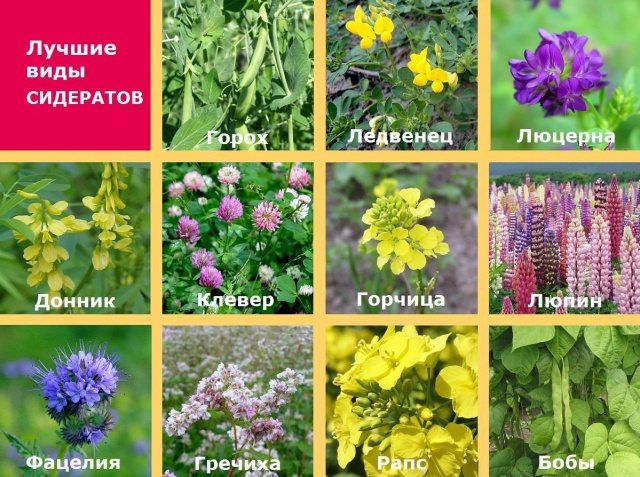

What time is the top dressing
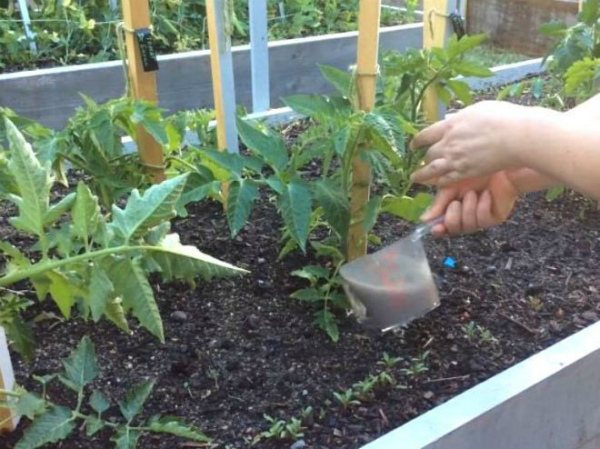

For root dressing, choose morning or evening. It is better if it is a dry, cloudy day, when there are no scorching rays and high humidity. The prepared solution is scooped up with a ladle and poured into the base of the stem of each bush, being careful not to get on the plants.
Foliar top dressing of tomatoes is always carried out only in the morning. Usually the bushes are sprayed, trying to catch up to 10 hours. By the evening, the leaves should dry completely, otherwise you can provoke the development of fungal diseases. The surface of tomato leaves is fleecy, so it dries for a long time.
First, the tomatoes must be watered, otherwise the fertilizers can burn the roots, and in this case the food will be absorbed smoothly, normalized.
Foliar top dressing is best timed to carry out preventive treatments for diseases and pests, but it must be remembered that preparations containing metal oxides are not compatible with any other substances. This rule also applies to copper-containing products.
On a note! In the greenhouse in the spring, tomatoes are fertilized only at temperatures above 15 ° C, otherwise the plants will simply not be able to assimilate the nutrients.
The main elements required for the nutrition of tomatoes
After the research, it was found that tomato plants require about 50 different chemical elements for their vital activity. Such nutrients are divided into macro - and micronutrients.
Macronutrients
Carbon - it comes to plants from the air through the leaves, as well as through the roots from compounds that are in the soil. The applied organic fertilizers contribute to an increase in the amount of carbon dioxide in the near-earth layer of the air, thereby accelerating photosynthesis, and, consequently, increasing productivity.
Oxygen - it is primarily necessary for metabolism, and also participates in the respiration of tomatoes. Lack of oxygen in the soil leads to the death of not only beneficial soil microorganisms, but also the plant itself. To enrich the soil with oxygen, you need to loosen its top layer near the tomatoes.
Nitrogen is the main element that is necessary for the nutrition of tomatoes and is an important component of all plant tissues. It is not absorbed from the air, so nitrogen must be brought in from the outside. Such an element is well absorbed by tomatoes only with a slightly acidic or neutral soil reaction. If the soil has high acidity, then liming is carried out.
Phosphorus - this element influences the growth and development of tomatoes. It is necessary during the period of budding and fruit formation. Phosphorus salts dissolve very poorly and slowly pass into the state required for assimilation by plants. Most of this element is assimilated by them from the stocks that were brought in last season. To maintain soil fertility, it is recommended to apply phosphate fertilizers every year.
Potassium - it is required by tomatoes during the period when fruits begin to form. Such an element promotes growth:
Thanks to the added potassium tomatoes become more resistant to various diseases, tolerating any stress well.
Trace elements
These elements are so named due to the fact that they are absorbed by plants in small quantities. Their lack affects the development of plants and productivity. The most important ingredients for tomatoes are:
- zinc;
- sulfur;
- molybdenum;
- boron;
- magnesium;
- calcium.
The need for special substances
Fertilizers for tomatoes are mineral and organic, they are used in a dry, liquid or semi-liquid state. The processing itself is carried out repeatedly and in different ways.
Macro and microelements
- Nitrogen fertilizers responsible for the development of leaves and stems. It is important to comply with the norm: with a lack of nitrogen, the leaves will be small and pale, and with an excess of them, too many will grow, unnecessary lateral shoots will be added, which will lead to the worst growth of the fruits themselves.
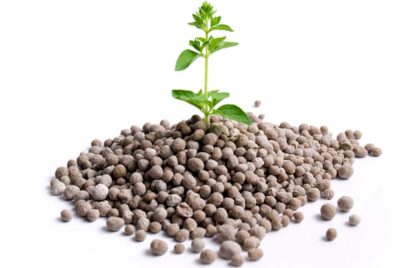

Phosphorus strengthens plant resistance to diseases and pests. Adequate phosphorus content contributes to the formation and strengthening of the root system, and also accelerates the process of fruit formation. The increased phosphorus content interferes with the production of zinc. Additional information on phosphorus fertilizers can be found here.- Potassium accelerates and improves the maturation process, contributes to the creation of immunity against fungal diseases that are characteristic of greenhouses. In addition, potassium forms the resistance of the culture to unfavorable conditions.
These three macronutrients are basic in the diet of greenhouse tomatoes. They are responsible for the formation of the aerial part of the plant and the palatability of the fruit. The consequence of insufficient maintenance of any of them is a fallen harvest. In addition to the main macronutrients, microelements also affect the growth and development of tomatoes.
- Boron is responsible for the formation and development of the fruit ovary, and is also used in the treatment of various diseases. It helps to strengthen the immune system of the culture.
- Manganese responsible for the process of photosynthesis, which is extremely important in plant life. Without it, the deciduous cover of tomatoes suffers, while dry spots appear on the leaves.
- Zinc takes part in the exchange of nutrients and biosynthesis of vitamins, evenly saturates the plants with nutrient elements.
- Magnesium accelerates the process of chlorophyll creation. It is desirable that the fertilizer contains molybdenum, since it controls the exchange of macronutrients.
- Sulfur carries out the synthesis of amino acids, and then proteins. It distributes and transports useful elements throughout the plant.
- Having enough calcium in the soil is necessary, as it promotes the assimilation of elements and the exchange of nutrients.

